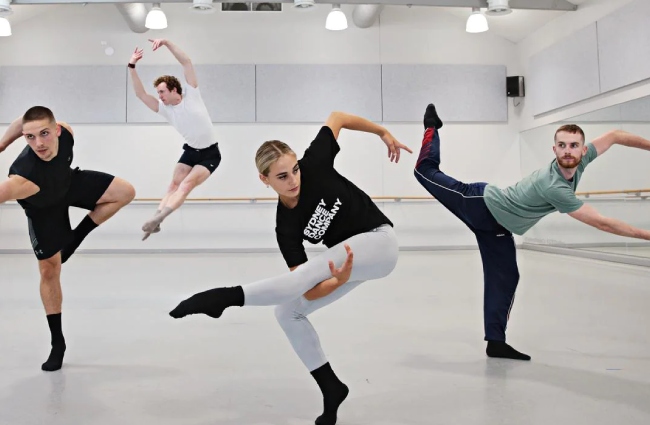Dance is an art that is performed and is a form that includes improvised or pre-planned movement sequences. This movement is both aesthetic and often symbolic.
There are several forms of dance, from ballroom to barn dancing and disco to Morris dancing.
Human culture, rituals, and celebrations have always included dance. Nowadays, most dancing is done for recreation and self-expression, though it can also be done competitively.
Dancing is a fun way to get more physical activity and stay fit.
Health benefits of dancing
Dancing helps people of all ages, shapes, and sizes stay fit. It has lot of physical and mental advantages, including:
- improves the situation of your heart and lungs
- Increase the strength of muscles, endurance and motor fitness
- increase aerobic fitness
- improve muscle tone and strength
- manages weight
- it makes bones stronger and reduces the chances of risk of osteoporosis
- creates better coordination, agility and flexibility
- also improves balance and spatial awareness
- increases physical confidence
- improves mental health and functioning
- improved general and psychological wellbeing
- greater self-confidence and self-esteem
- good social skills.
Types of Dance
There are numerous dance styles to choose from, each with its own set of benefits. Popular dance styles include:
- Ballet – This dance style, which is mostly performed in classical music, emphasises strength, technique, and flexibility.
- Ballroom dancing – This includes a variety of partner dances such as the waltz, swing, foxtrot, rumba, and tango.
- Belly dancing – This dance style, which originated in the Middle East, is a fun way to exercise.
- Hip-hop – This urban dance style, which is mostly performed in hip-hop music, can include breaking, popping, locking, and freestyling.
- Jazz – a high-energy dance style that involves kicks, leaps, and turns to the music
- Pole dancing – has grown in popularity as a form of exercise. It requires muscle endurance, coordination, and upper- and lower-body strength to dance with a vertical pole.
- Salsa – Salsa is a partner dance that combines the Caribbean, Latin American, and African influences. It emphasizes rhythms and sensuality.
- Square-dancing – a type of folk dancing in which four couples move around each other and change partners in a square pattern.
- Tap dancing – focuses on timing and beats. This name comes from the tapping sounds made when the small metal plates on the dancer’s shoes come in contact with the ground.
General tips for dancing
If you are thinking of take dancing classes, some suggestions include:
- Talk to your doctor and get a check-up if you have a medical condition, overweight, over 40 years of age or are unfit.
- Wear few clothes that you can remove as your body warms up.
- Perform warm-up exercises before beginning a dance session.
- Before, during, and after dancing, consume a lot of water.
- Be sure you take a rest between dance sessions.
- Don’t push yourself too far especially when you are a beginner.
- Wear professionally fitted shoes properly to your style of dance.
- Make sure with your dance instructor that you are holding the perfect form.
- First, sit and observe new dance moves. Learning new moves increases your risk of injury, particularly if you are already exhausted.
You can dance in a group, with a partner, or alone.
Dancing can be enjoyed in a variety of settings, including dance schools, social venues, community halls, and even your own home. Dancing has become such a popular way to stay active and fit that most fitness clubs now include dance classes as part of their group exercise programmes.
Dancing is available to do for both competitively as well as socially. It can be a great recreational and sporting option for people of all ages. Weather doesn’t matter if it’s cold, hot or raining outside because most dancing is done indoors.
The equipment required for dancing will vary depending on the style of dancing you choose. Tap dancing, for example, will necessitate the purchase of tap shoes; however, many forms of dance do not necessitate the purchase of special equipment or footwear.
To get started, simply choose a style you enjoy, or would like to try, and join a dance class or dance school.

